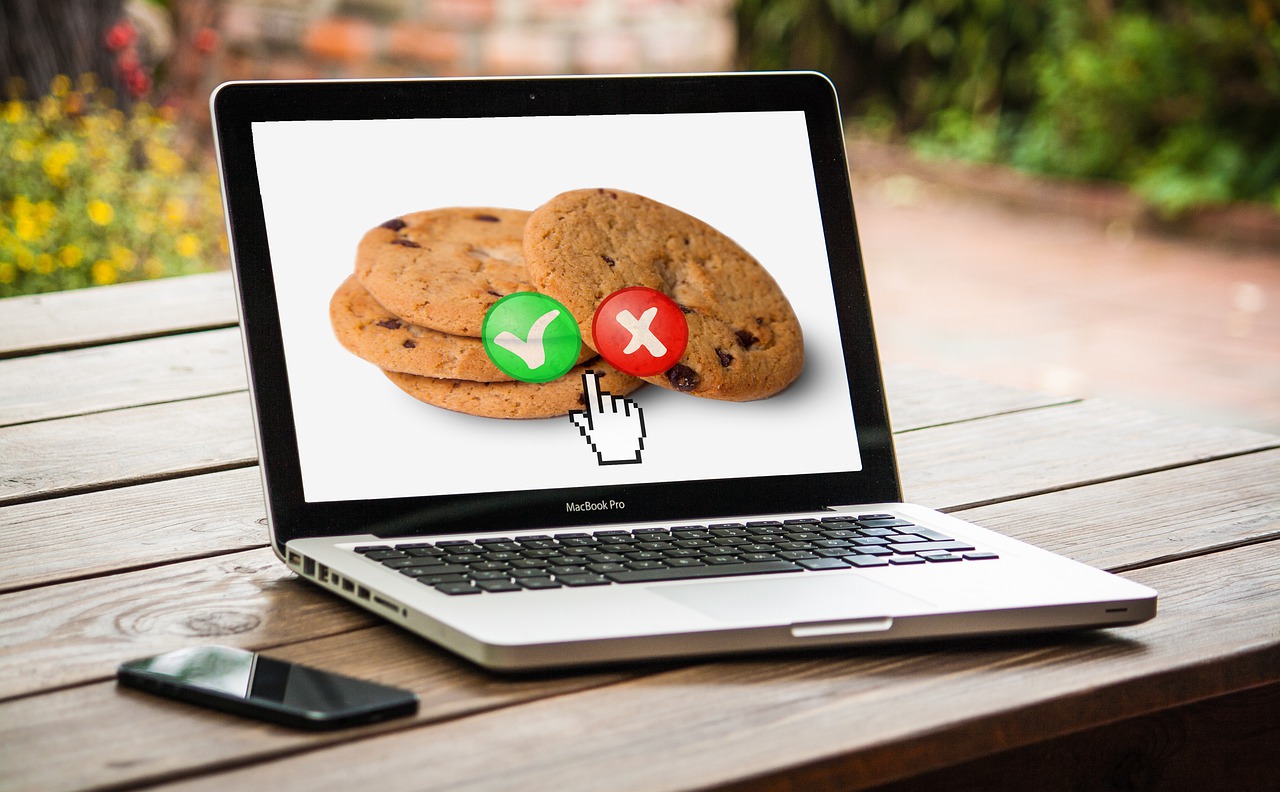Email Marketing For Small Businesses: A Guide To Getting Started via @sejournal, @BrianFr07823616
When it comes to reaching new audiences, heating up cold leads or staying top of mind with existing customers, there’s nothing quite like email marketing. The post Email Marketing For Small Businesses: A Guide To Getting Started appeared first...

Most forms of marketing are expensive.
Direct mailers can cost up to $1 per target, while billboards could run you $14,000 apiece in major cities. And television commercials can run into the millions, once you include the cost of production and placement.
Let’s face it: most small businesses can’t afford that.
But what if there was a way to reach your desired audience for much less – perhaps as little as $9 a month?
You don’t need a fairy godmother. You just need to harness the power of email marketing.
Why Use Email Marketing For Your Small Business?
When it comes to reaching new audiences, heating up cold leads, or staying top of mind with existing customers, there’s nothing quite like email marketing – and not just because it’s cost-effective.
The main reason you need to be using email campaigns is that they’re extremely effective.
The average open rate for marketing emails in 2021 was a whopping 21.5% – a growth of 3.5% in just one year. That makes it by far one of the most effective ways to advertise.
Professional marketers know it works – that’s why 41.5% consider it a very critical factor in their company’s success.
In 2019, email marketing provided a return on investment (ROI) of an unbelievable $52 for every dollar spent. That means you can’t afford not to use it.
While price and effectiveness are two key selling points for running email marketing campaigns, one that tends to appeal to busy small business owners is that it’s something you can do yourself.
You don’t have to outsource your email campaigns to an agency or hire someone in-house.
With a little elbow grease and the information you gain here, you’ll be able to create and launch your own effective campaign in no time.
Ready to get started? Let’s go.
How To Start Email Marketing For Your Small Business
1. Choose The Right Email Marketing Platform For You
Having the right tools is an essential part of any job, whether it’s carpentry or marketing. And for business marketing, that means selecting the right email marketing software.
You could forgo this step and build all of your lists and campaigns manually in Gmail, Outlook, or whatever other email service provider you’re using, but you have a business to run.
Manual list building is a tedious, time-consuming process that takes your attention and energy away from other areas.
Plus, an email platform gives you the opportunity to personalize your messages while collecting performance metrics. These things alone make it worth the investment.
When deciding between the dozens of programs available, you need to find one that has the right functionality for you.
Some features you should consider are:
Personalization features – Targets are 26% more likely to open personalized emails. Look for a platform that can parse your list for names and automatically insert them into emails. Custom branding – Your customers associate your small business with certain colors and a logo. The software you choose should make it easy for you to customize your emails with your brand. A/B testing – Version testing is one of the pillars of modern marketing. You should select a platform that allows you to try different subject lines and other content to find what works best for your field. Drag-and-drop – If you don’t know how to code, you’ll want software that lets you create great-looking emails without a thorough knowledge of HTML or CSS. Responsive design – 81% of emails are opened on mobile devices; Make sure your email builder automatically scales them to different screen sizes. Segmentation tools – To get the best results, you’ll want to target different groups with different messages. Look for a platform with a segmentation tool that allows you to divide your list into smaller groups.Some of the most popular email marketing platforms include:
Constant Contact HubSpot MailChimp Aweber Sendinblue2. Build Your List
Successful email marketing depends on getting your messages in front of the right people. To do this, you need a good marketing list.
There are a few ways you can get one.
The first is to build it yourself.
Go through your contacts, pull out the business cards you gathered at industry conferences, and comb the internet for the contact information of the people you want to reach. This can be time-consuming.
To expedite the process, add a signup form to your website. This makes it quick and easy for interested visitors (who are hopefully hot leads) to get on your mailing list.
Consider offering a discount to encourage those who are hesitant. You’ll be shocked by how many new emails you can generate just by adding an interstitial to your site offering a 10% discount in exchange for an email address.
You should also leverage the power of your social media accounts to generate subscribers.
Create interesting, relevant content that will attract the right type of people. Put a link in your profile bio that directs to a signup landing form.
People who are following you on social media are probably already at least a little interested in your offering. It’s up to you to get them on your mailing list.
Another option is to buy a list.
Ranging from $100 to $600 CPM (cost per mille, i.e., cost for 1000 addresses), there are a number of places to buy these lists available with a simple Google search. Just be aware that there can be variable quality to these lists.
Furthermore, it’s very easy to run afoul of spam guidelines when you’re buying lists. In some places, it’s illegal to send people emails without their consent.
You may also end up hurting your sender reputation, which, in some cases, can even result in your IP being blacklisted.
If you’re buying email marketing lists, you do so at your own risk.
3. Plan Your Campaign
Now that you have your targets assembled, it’s time to start figuring out what you want your email campaign to achieve.
What are your goals? Do you want to send promotional emails promoting sales and special offers? Do you want to send transactional emails like abandoned cart messages or upsells? Are you soliciting referrals or reviews from existing customers?
Once you have decided what you hope to accomplish, it’s time to create your campaign. There are five common types of emails that will suit most of your needs:
Blast emails – used for general announcements to a large audience. Monthly newsletters – to keep your business top of mind and update your audience about new developments. Welcome emails – For new subscribers or customers. Promotional emails – offering sales, benefits, or incentives to encourage transactions. Reminder emails – encourage targets to complete purchases or make another.One of the more common sequences consists of a welcome email after initial signup, one or several promotional emails enticing sales, followed by promotional emails or reminder emails.
Email marketing is also an effective way to re-engage past customers or warm up leads who have gone cold.
A typical sequence for this consists of a reintroduction email, reminding them of your brand, followed by a “we miss you” message that offers a discount or other incentive to use your business again.
There are many other uses for emails, too.
Perhaps you’re hosting an open house and want to invite the recipients. Maybe you have a monthly newsletter that helps establish your credibility and authority.
The beauty of this medium is its versatility. All you need to do is customize your messaging to your goals.
4. Create Your Emails
This is where your emails become reality.
A common mistake many inexperienced marketers make is wanting to add too many bells and whistles. Not only does an overly elaborate design distract from your key message, but it also confuses customers.
Keep your design clean and simple. Some businesses opt for plain text emails, which contain no graphics aside from maybe a logo in the signature.
This may be too extreme for you, however. It’s okay to brand your emails, just make sure you keep them simple.
Once you have settled on a design, it’s time to focus on messaging.
The first battle is getting your message opened, and that means a compelling subject line.
Try to inspire curiosity or offer some other motivation, e.g., “You won’t believe this deal,” “25% off sitewide,” or “Mistakes that can cost you.”
Now that you have your reader’s attention, it’s time to make your case.
Avoid overwriting and keep it simple. Explain what you’re offering or hoping to achieve, then include a call to action (CTA).
Any salesperson worth their salt will tell you, you have to ask for the sale. CTAs in emails and other collateral are the marketing equivalent.
 While writing your emails, keep in mind your target demographic and write to them.
While writing your emails, keep in mind your target demographic and write to them.
Some people find it helpful to imagine writing to a specific customer they know well.
It’s okay to use industry jargon, but only if it’s something everyone in your field will understand.
5. Send The Campaign And Analyze The Results
The email platform you selected back in step one should provide you with all the information you want about how your messages are performing – and this should give you an idea of where you can improve them in the future.
Are you not getting enough opens? You could have a bad list or maybe you need to try a different subject line.
Are you getting opens, but no conversions? Try changing your content.
Are you seeing a lot of unsubscribes? You could be sending too many emails and becoming annoying.
If your results are poor, don’t worry. Email marketing is an art and no one gets it right the first (or second, or third) time. That’s why you want to take advantage of A/B testing.
But if you put in the work, you’ll get a feel for what does and doesn’t work in no time and start generating the results you want.
Bonus Tips
Here are some additional ideas to help you maximize your email campaigns:
Focus on quality, not quantity. Encourage signups wherever it makes sense (social media, on your website, etc.). Segment your list so your messages are more targeted. Automate messages where you can. This includes welcome messages, purchase confirmations, and re-engagement emails.Email Marketing Is A Powerful Tool For Small Business
Email marketing provides the opportunity for a massive ROI, without a lot of upfront costs.
But you can’t just send out messages willy-nilly and hope for results.
Plan your strategy, do the work, track your results and tweak your messages (in other words, follow the tips provided here), and you’ll find your campaigns getting great responses in no time.
More resources:
Small Business Marketing 101: Getting Started Just Getting Started In SEO? Experts Share 5 Helpful Tips Content Marketing: The Ultimate Beginner’s Guide to What WorksFeatured Image: Billion Photos/Shutterstock

 Astrong
Astrong 































